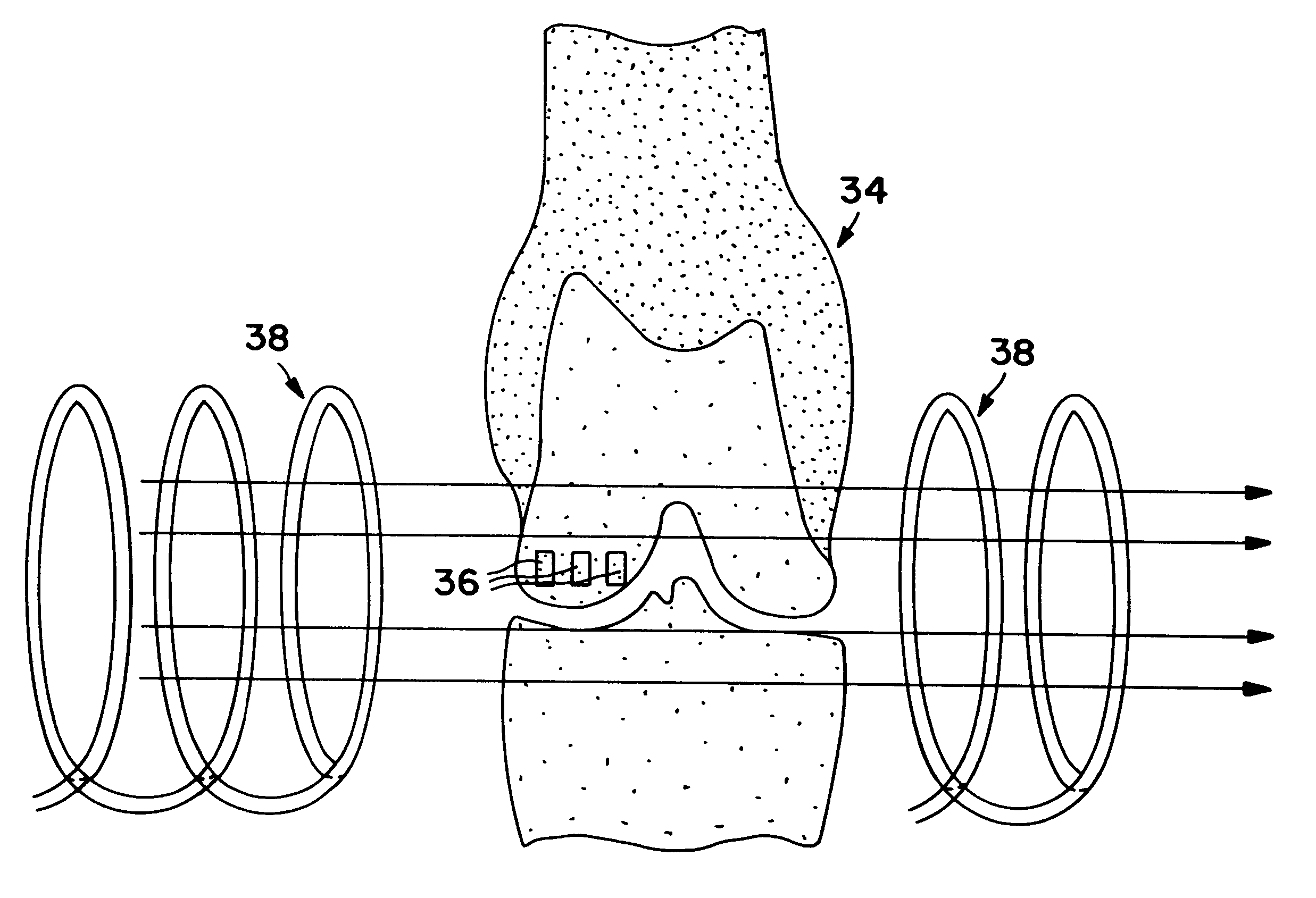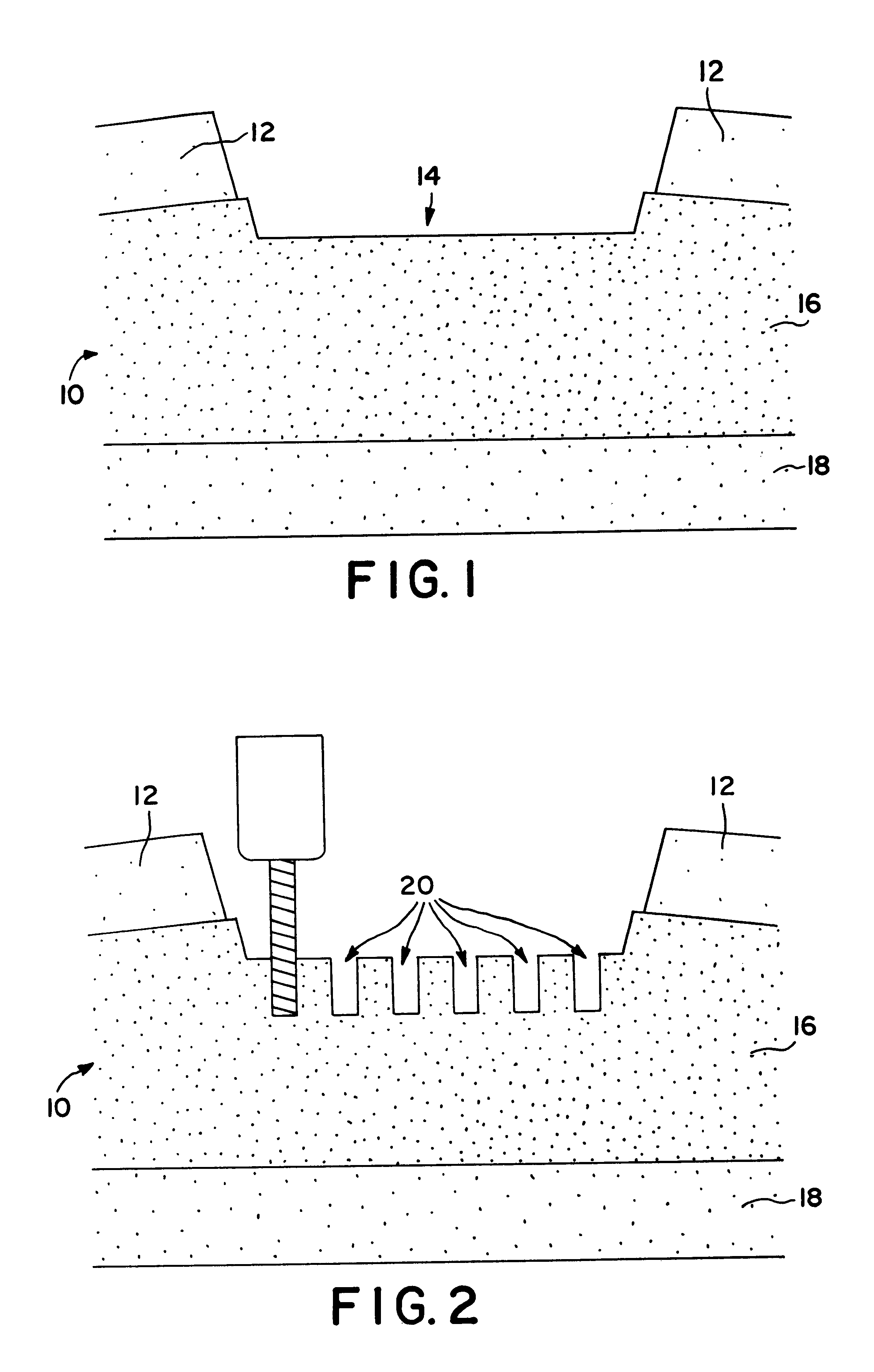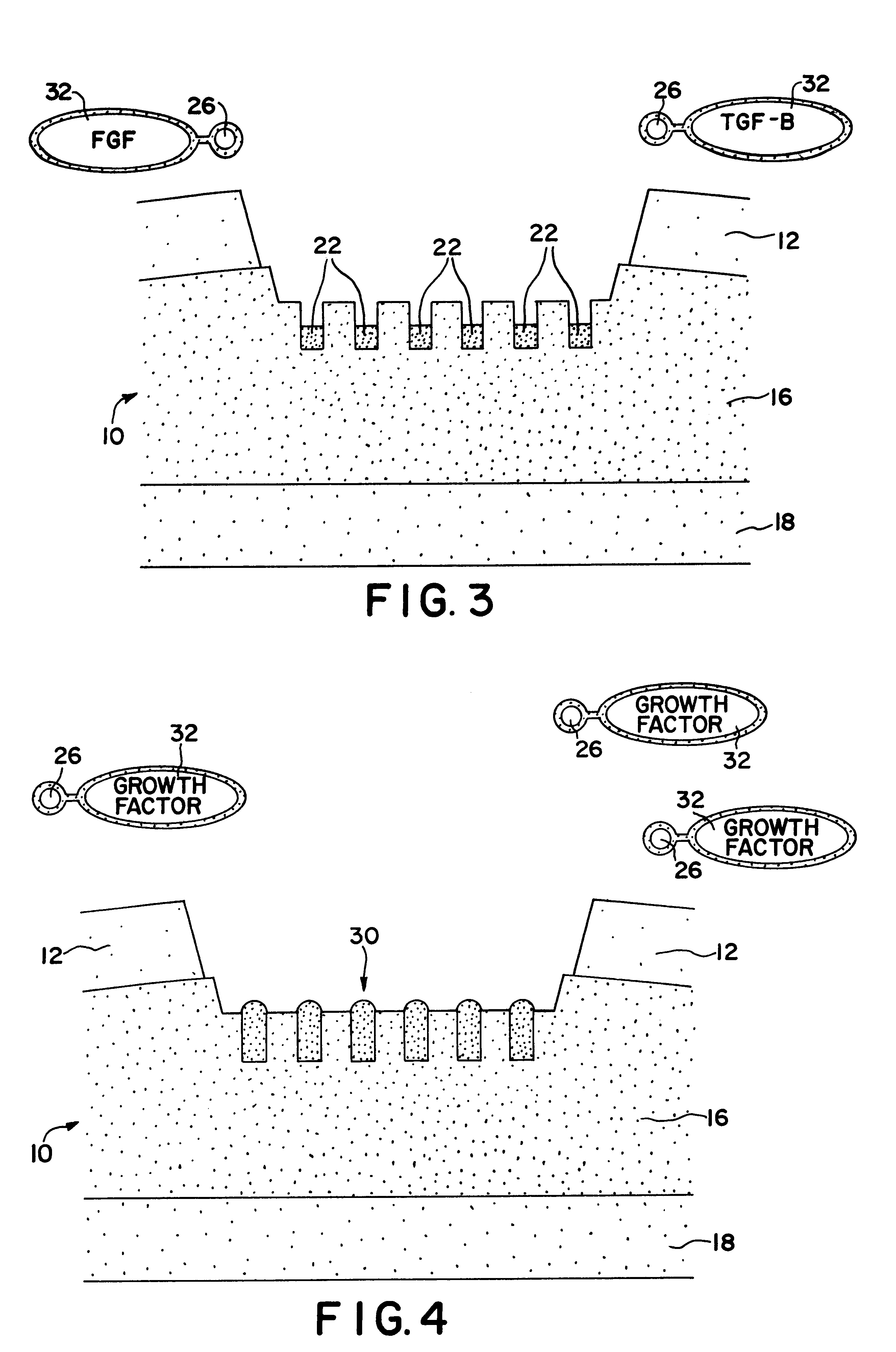Means for cartilage repair
a cartilage and bone technology, applied in the field of orthopaedic research, can solve the problems of no current approach being used clinically for cartilage defects, no commercially viable treatment alternatives to date, and the success of large chondral and osteochondral defects and degenerative lesions is still a challenge for orthopaedic surgeons, so as to reduce the extraneous effect of calf serum
- Summary
- Abstract
- Description
- Claims
- Application Information
AI Technical Summary
Benefits of technology
Problems solved by technology
Method used
Image
Examples
example 2
This example is designed to critically evaluate the ability of ferromagnetic dipoles to increase the rate of protein synthesis and proliferation in this culture system.
Primary cultures of periosteum tissue, marrow cells and chondrocytes are prepared and cultured as previously described. Experimental groups are prepared with ferromagnetic dipoles placed in a matrix grid pattern every 2 mm glued to the bottom of the dishes so as to be oriented perpendicular to the dish bottom. The agarose / cell suspension is then overlaid on top of the dipole array. The study is conducted in an analogous fashion to Example 1 with the following differences: Growth factor containing mediums are specially tagged to magnetic beads. Control sample are treated in a similar fashion but lack the ferromagnetic dipole array in the bottom of the petri dish.
example 3
This example is conducted in an identical fashion as Example 1 with the exception that medium supplemented with FGF alone (-TGFb) added for the first 5 days in culture. Cultures are then fed the medium containing the TGFb (3 ng / ml) and FGF is no longer used. The medium containing the TGFb is continued for a total culture time of two weeks and samples are treated as described in Example 1. The dosage of FGF used is determined from the optimal response found from the results of Example 1. Control cultures are fed med. A alone.
example 4
This example tests the reverse temporal sequence for growth factor addition as stated in Example 2. In this experiment TGFb (3 ng / ml) alone is added initially followed on a 5 day FGF. Again, samples are treated as described above with respect to dosages and controls.
PUM
| Property | Measurement | Unit |
|---|---|---|
| Size | aaaaa | aaaaa |
| Size | aaaaa | aaaaa |
| Pore size | aaaaa | aaaaa |
Abstract
Description
Claims
Application Information
 Login to View More
Login to View More - R&D
- Intellectual Property
- Life Sciences
- Materials
- Tech Scout
- Unparalleled Data Quality
- Higher Quality Content
- 60% Fewer Hallucinations
Browse by: Latest US Patents, China's latest patents, Technical Efficacy Thesaurus, Application Domain, Technology Topic, Popular Technical Reports.
© 2025 PatSnap. All rights reserved.Legal|Privacy policy|Modern Slavery Act Transparency Statement|Sitemap|About US| Contact US: help@patsnap.com



